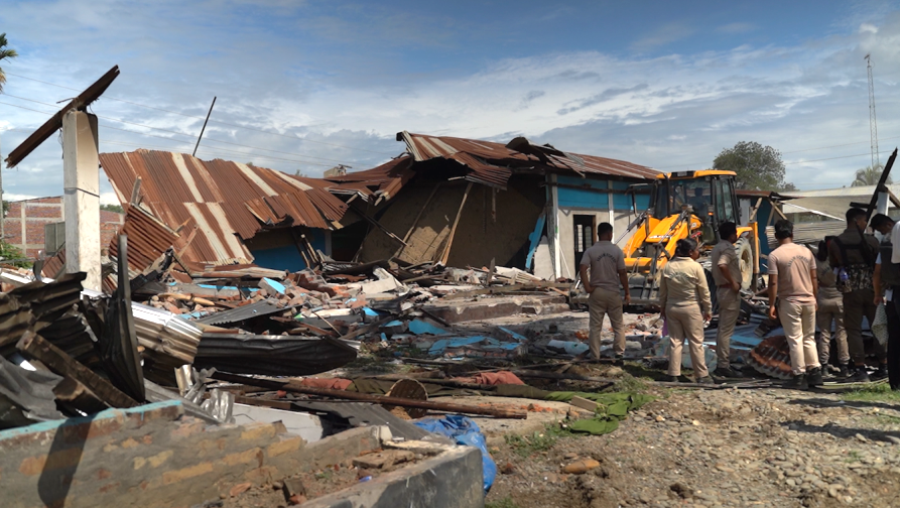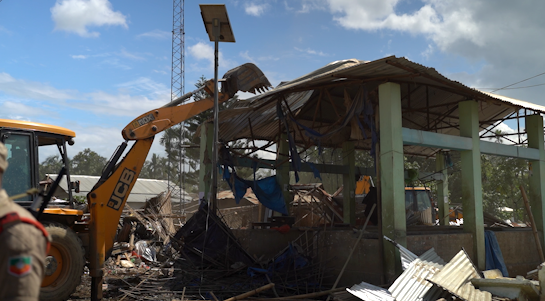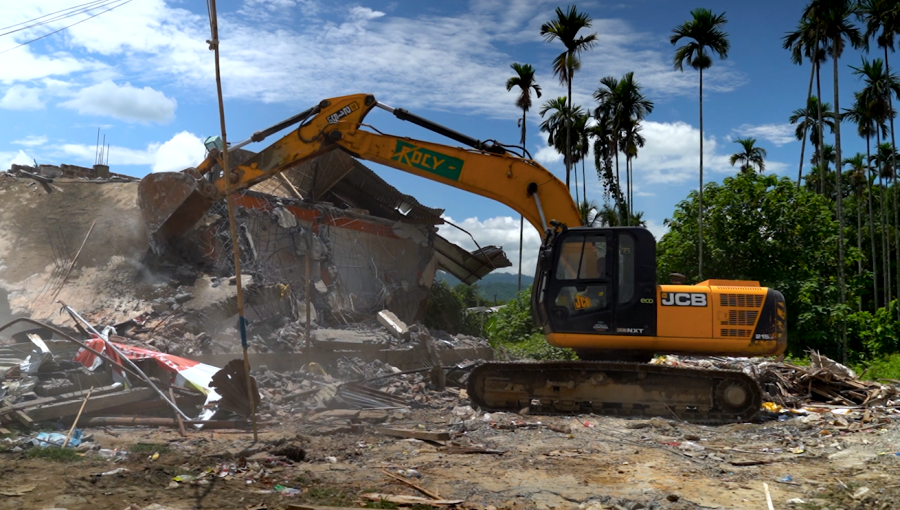A joint eviction drive was conducted in Section-C of the disputed Nagaland-Assam border, affecting several villages.
Share

DIMAPUR — A joint eviction drive was carried out on Tuesday by the Assam and Nagaland governments in areas falling under Section-C of the Disputed Area Belt (DAB).
The operation focused on Bidyapur and Kherbari (Liphanyan village) and Madhupur (Tchujanphen village), all of which fall under Section-C of the DAB.
Speaking to the media, Border Magistrate of Uriamghat, Tsenthungo Ngullie, stated that the survey was conducted by the Assam Forest department, which claims the area as part of the Rengma Reserved Forest within the DAB. He noted that four villages recognised by the Nagaland government were affected by the drive.
Ngullie clarified that Naga household properties currently occupied by Naga residents was not affected. He said further decisions would be taken by higher authorities after the eviction process is completed.

He also emphasised that the matter is currently pending in the Supreme Court, and both governments should maintain the status quo.
Ngullie added that the Nagaland team was led by him and included the SDO (Civil) Ralan, OC Ralan, 10 IR Assistant Commandant, and SDPO Bhandari. The Assam team was headed by the Special Chief Secretary of the Forest Department and included the DC Golaghat, SP Golaghat, Border Magistrate, and others.
Also read: 10th NAP (IR) deployed in Ralan ahead of Assam eviction drive
Speaking to the media, Assam’s Special Chief Secretary for Forest, MK Yadav, said there had been excellent cooperation between the two governments. The official said he had personally engaged in discussions at the highest levels on both sides, including coordination at the district and Border Magistrate levels.
He noted that even Goanburas from Ralan villages and SDPOs took part in the eviction drive, highlighting what he described as a unique operation made possible through goodwill and coordination.
Asked about measures to prevent evicted individuals from entering Nagaland, Yadav said the matter had been taken up at the highest level, and both governments were aware of the situation and taking necessary steps.

He added that the eviction process was being carried out carefully, and further details would be made clear in due course. He estimated that 100 to 150 households had been evicted but said an exact count was not yet available.
On the extent of land reclaimed today, Yadav said the exact figures were pending but estimated it to be between 5 and 10 hectares. He explained that the operation was being carried out strategically to avoid harming genuine residents, especially from Nagaland, and said the slow pace of the process was due to the extra caution being taken.
Regarding the extent of encroachment, he said a full assessment had not been completed but estimated it to be around 10,000 to 11,000 bighas. He clarified that the current focus was on completing the eviction without affecting genuine residents and that further actions would be discussed with both state governments.
WATCH MORE:
Meanwhile, CS Ovung, Chairman of the Ralan Area Lotha Hoho, acknowledged the ongoing drive but expressed concern over the limited representation from the Nagaland side. He noted that, apart from the Border Magistrate, few senior officials from Nagaland were present, in contrast to the strong presence from the Assam government.
He appealed for greater representation from Nagaland officials during such drives to ensure proper coordination. Ovung also warned that continued absence of senior officials could lead to public resentment and urged the state government to inform local communities about post-eviction plans.
Read more: Assam government launches massive eviction drive to clear encroachment on 11,000 bighas of land
He alleged that during the 1980s, the Assam government had brought in illegal settlers to the area, which he claimed was ancestral land. Now that the same settlers are being evicted, he questioned the government’s motives and said the community remains unaware about any underlying agenda.
He also expressed concern that if people from Assam were allowed to reoccupy the area, it could lead to further problems, and urged the government to clearly communicate post-eviction plans.

Lawrence Ovung, another member of the Ralan Area Lotha Hoho, alleged that the Nagaland government was treating them as outsiders and claimed that their ancestral land was slowly being shifted under Assam’s jurisdiction under the guise of DAB.
He said that during a visit by the Deputy Chief Minister of Nagaland, questions were raised about post-eviction measures, but no answers were provided. He called for clarity from the state government and appealed for the deployment of reinforcements in the area.
Mhoyamo Ngullie, also a member of the Ralan Area Lotha Hoho, stated that although the eviction was being termed a joint effort, in practice, it was being carried out by the Assam government, as Nagaland had not provided any machinery.
One individual who received an eviction notice said the area was home to communities including Bodos and Assamese of Hindu and Muslim faiths. However, he alleged that the eviction appeared to target only the Muslim community. He appealed to the Assam government to provide an alternative location for resettlement, stating that he had migrated to the area in 1978 and had been living there since.